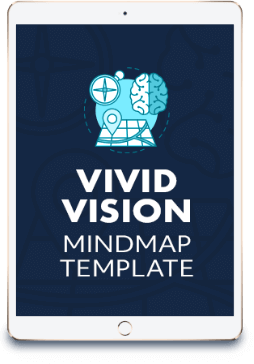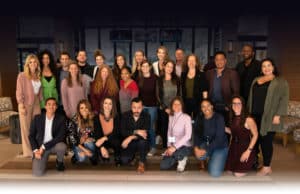My right-hand team member decided to quit before a super busy quarter: We were preparing to host an event, sponsor several others, launch our new year-long program, and I even had multiple speaking engagements lined up.
I panicked.
To make it worse, another team member came and told me he was going to take a different job and that the virtual work lifestyle wasn’t for him.
I called my mentor, Mary, one of the most sought-after self-development experts in the world, and she shared six words that changed my life:
“Jennifer,” she said, “hold the vision, not the circumstance.”
That quote landed in my cells, and that quarter ended up being one of Conscious Copy & Co.’s best, and that’s why the key ingredient to making your company vision a reality, faster is having a Vivid Vision. It’s the most powerful way to attract top talent and ideal customers, align your current team, and show up as a confident leader within your company.
And it’s not a surprise some of the world’s most successful entrepreneurs have shared on how important a clear vision really is.
But don’t take my word for it, here are 8 lessons on vision from billion-dollar business leaders.
1. Steve Jobs

Photo Credit: Apple
“If you are working on something exciting that you really care about,
you don’t have to be pushed. The vision pulls you.”
Steve Jobs was the ultimate visionary. He imagined the innovative products he wanted to create first, then led his team to develop those products second.
The vision was his guide for success.
Lesson: It Always Starts With A Vision
The right vision should pull you forward, especially in difficult times.
Not only that, when you’re clear of your vision, it pulls in the right people along with you: team members, investors, clients/customers, etc.
Why else were people so willing to follow Steve Jobs? Because they believed in the vision.
Without a vision, you’ve got no momentum.
2. Tony Hsieh

Photo Credit: Zappos
“Chase the vision, not the money; the money will end up following you.”
Tony Hsieh founded LinkExchange at 23, sold it to Microsoft for $265 million two years later, and became the CEO of Zappos in 2000 when their total sales were $1.6 million.
Nine years later, their revenue reached $1 billion.
He did this by focusing on extraordinary customer service, and going above and beyond to make people feel good. Including the team. He restructured the company to function without job titles, which reflected the belief he had in his employees to self-organize.
Lesson: Align Everyone With Your Shared Vision
A business that knows where it’s going is more likely to get there, and as the entrepreneur or CEO of your business, your #1 role in the company is to be the holder of the vision.
It’s your job to get crystal clear of where your company is headed so you can motivate your team, vendors, partners, and clients to come together to make it a reality.
When you can clearly communicate the vision to your team, they know exactly where they’re headed; it inspires them to push towards the vision you share.
The same goes for clients, customers, partners, and investors: painting a clear picture of what you envision for the future of your business will excite them, and inspire anyone who resonates with your vision to rally behind you.
In business, we can either create our company by default or by design.
When you don’t have a clear and compelling vision for you and everyone around you to charge toward, you’re creating your business by default.
It’s kinda like being in business for 10 years, only you end up running the same year 10 times.
Create your company by design by getting crystal clear on your vision.
3. Sara Blakely

Photo Credit: Fortune Live Media
“You’ve got to visualize where you’re headed and be very clear about it. Take a Polaroid picture of
where you’re going to be in a few years.”
Sara Blakely’s idea for Spanx was turned away by everyone in 1998. One manufacturer decided to help, but he still called it “crazy.”
But she was clear of her vision so she continued on, and in November 2000, Oprah featured Spanx on her Favorite Things list.
Spanx did $10 million in sales in two years.
And in 2012, she became the youngest self-made billionaire in the world.
Lesson: Get Crystal Clear Of Your Vision
Sara created a picture in her head so clear that she became unstoppable. It took only two years to build a million-dollar company.
In the book Vivid Vision: A Remarkable Tool For Aligning Your Business Around a Shared Vision of the Future, Cameron Herold writes about the Vivid Vision process that helped him turn 1-800-GOT-JUNK into a $100M multinational company that appeared on Oprah, was featured in The Harvard Business Review, and was listed as the second best workplace culture in Canada:
Have you ever observed an athlete right before a competition? The next time you watch the Olympics or World Track and Field Championships, watch the high jumpers. Most of them stand very still just before they start their run up to the bar. They close their eyes and often bob their heads up and down or even throw their heads backward a bit as they focus their imaginations and see themselves running up to the bar and thrusting their bodies over it. Then they open their eyes, stare at the bar intently, and begin to recreate in reality what they just visualized. These athletes use focus and visualization to achieve their desired results, and by imagining the obstacles they might face along the way, they prepare themselves mentally and physically for the challenge.
Your vision should be so clear that you can see a picture of it in your mind.
4. Oprah Winfrey

Photo Credit: Vera Anderson, Getty Images
“You must have some vision for your life. Even if you don’t know the plan, you have to have a direction in which you choose to go… You want to be in the driver’s seat of your own life because if you are not, life will drive you.”
Oprah faced poverty, abuse, discrimination, and other obstacles throughout her life, but still went on to build a billion-dollar media empire.
She regularly shares that it was the vision she had for herself that gave her direction, even when she didn’t have a plan.
Lesson: Vision Gives You Direction, Something To Aim At
Without a clear vision, you have no direction, and circumstances could knock you off track. From Cameron Herold’s book Vivid Vision:
The focus and visualization techniques used by athletes can and should be applied to business. If you and your employees aren’t prepared—mentally and in all other ways—to overcome the obstacles you might face on the path to your goals, you’ll struggle to achieve them.
A clear vision keeps you focused when you experience setbacks, because you know where you’re headed. Who cares that so and so quit, or sales are down one month—you readjust and keep pushing towards your destination.
5. Jeff Bezos
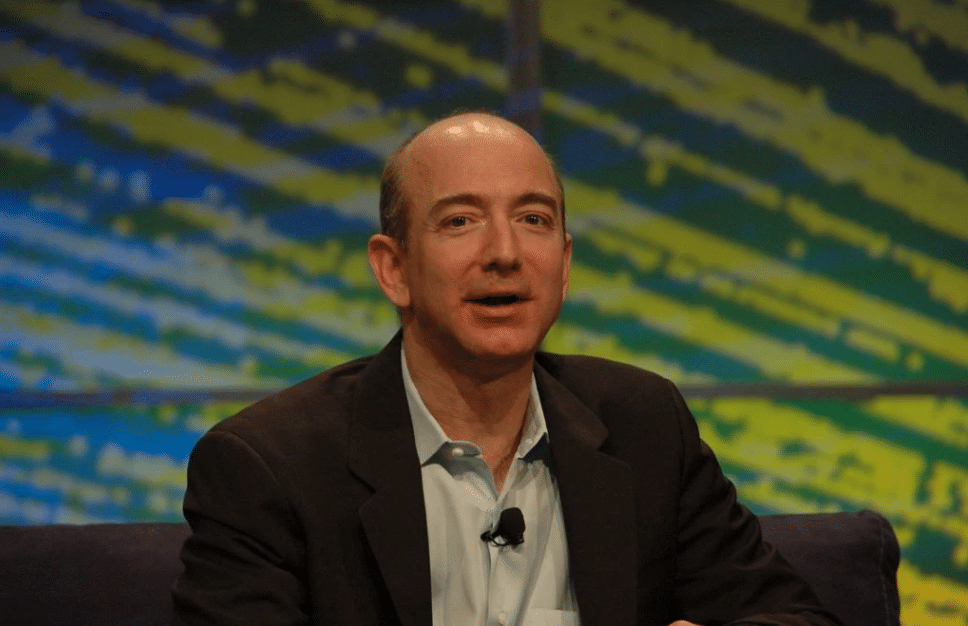
Photo Credit: Dan Farber
“We are stubborn on vision. We are flexible on details…. We don’t give up on things easily. Our third-party seller business is an example of that. It took us three tries to get the third-party seller business to work. We didn’t give up.
“If you’re not stubborn, you’ll give up on experiments too soon. And if you’re not flexible, you’ll pound your head against the wall and you won’t see a different solution to a problem you’re trying to solve.”
Jeff Bezos took 60 meetings for the first round of funding for Amazon, and 40 of those people said, “no.”
Three years later, the company went public, and four years after that it generated $1 billion in revenue.
Today it’s estimated worth is $386 billion.
Lesson: Don’t Get Caught Up In The “How”
One mistake we see business leaders make when they try to write a Vivid Vision is focusing on the “how”: they get caught up in the details of how they’ll turn it into a reality.
Maybe a voice inside pops up and says:
“How are you going to make THAT happen??”
“You don’t know how to do THAT.”
Or, “Is that really realistic?”
Here are 2 important things to remember:
- If you knew the how, it would be a goal, not a vision.
Because goals should be in service of our vision.
A key part of crafting your vision is not knowing the how (right now)—so you’re on the right track!
- It’s a process.
Any time you hear those voices come up (“Ok, but how am i going to make this happen?”), remind those parts of yourself that they can have a voice… just not right now.The “how” and strategy will come after. Right now, focus on the dream.
6. Walt Disney
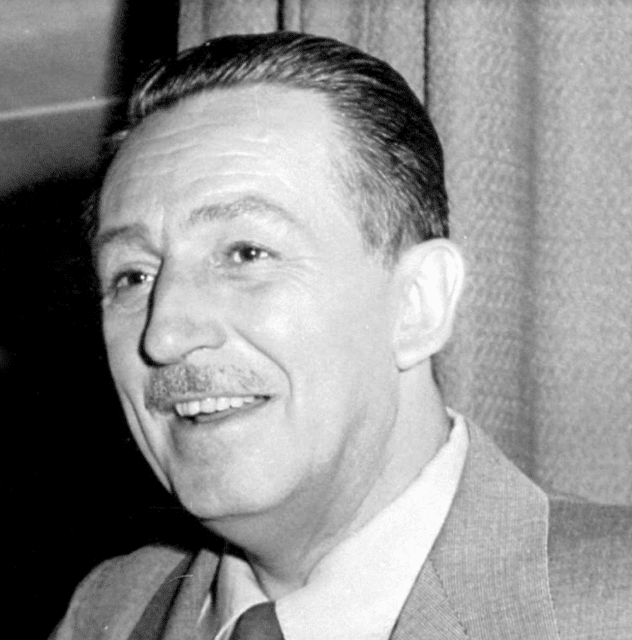
Photo Credit: Pixabay
“If you can dream it, you can do it.”
Walt Disney first envisioned “a place where adults and children could go and have fun together” in the 1930s while visiting amusement parks with his daughters.
Disneyland didn’t open until 1955.
Within that time, he had a mental breakdown, World War 2 happened, and a financial crisis hit, all of which affected his business.
But when the time came, he stuck to his vision and built what would become a business worth $200 billion, along with the happiest amusement park on earth.
Lesson: Vision Keeps You Inspired When Things Are Uncertain
Running a company isn’t easy. Unexpected events happen. World crises hit. Plans fall through.
The vision you hold keeps you going when things don’t seem to be working out.
Every day you should show up as the person who’s already achieved your vision.
Whether it takes you three years, or twenty five like Walt Disney, when you’re clear of your vision nothing can stop you.
7. Conrad Hilton
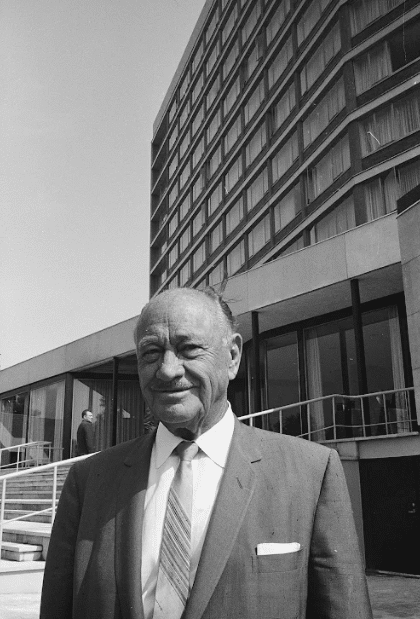
Photo Credit: Wikimedia
“To achieve big things, you have to have big dreams… It always started with a dream.”
In 1919, Conrad Hilton wanted to buy a bank in Texas. The deal fell through and he bought a hotel instead.
He opened several other successful hotels over the next decade, until The Great Depression forced him into bankruptcy.
Through a series of financial maneuvers, he regained control of the properties he lost, and expanded into California, Illinois, and New York. Years later, in 1954, he made the largest purchase in real estate history at the time when he bought The Hotels Statler Company for $111 million.
Today there are 584 Hilton properties across six continents.
Lesson: Your Vision Should Feel Like A Stretch
Many business leaders hold themselves back when they try to come up with their vision.
Maybe you have a big vision, but you don’t think it’s possible.
Maybe you’re limiting yourself by capping the vision at a certain level.
Or maybe you’re clear of the vision, but it feels uncomfortable.
This is a good sign! Ignore the voices in your head and allow yourself to dream big. Don’t be afraid of your vision: get excited about it. Get excited about what your culture, team, operations, revenue, etc, will look like if you had it your way.
Remember: This is YOUR vision, and it should look however you want it to.
Don’t hold yourself back, and if your vision doesn’t feel like a stretch, go bigger 🙂
8. Estee Lauder

Photo Credit: Bill Sauro, World Journal Tribune
“All great things begin with a vision… a dream… I’ve always believed that success comes from not letting your eyes stray from that target. Anyone who wants to achieve a dream must stay focused, strong, and steady.”
Estee Lauder’s uncle was a chemist who sold beauty products, and one day she decided to name one of his creams “Super Rich All-Purpose Cream” and sell it to her friends.
The beauty market was crowded in 1946 when Estee eventually decided to start a company; she dreamed of a beauty line that focused on personal touch and luxury, and she didn’t settle.
Her products were only sold in specialty department stores that made customers feel glamorous when they sampled the beauty line.
”Launch at the top, and stay at the top” is the strategy and mantra the company still sticks by today, at a valued $14 billion.
Lesson: Hold The Vision, Not The Circumstance
Maybe it’s a health scare, a key member of your team quitting, a family emergency, or a worldwide crisis… Challenges come up no matter how well you’ve planned.
It’s the vision you have for your company that pulls you forward when the world knocks you off track.
A noisy online market makes it hard to stand out…
Competitors are crushing it while your revenue is stalled…
Your new product or service launched to crickets…
You make the decision to focus all your attention and emotions on the vision rather than the circumstance in those moments; you can have the circumstance without the circumstance having you.
As long as you have a clear vision you can anchor back into, so you can pour your energy into it every single day.
How To Write A Vivid Vision For Your Company
If you’d like to create a Vivid Vision for your company, here are several resources to help you get started:
The Vivid Vision Mind Map™
This guide will give you a template you can use to begin crafting your Vivid Vision. It contains question prompts for you to follow and examples to reference.
Step-By-Step “How To Write A Vivid Vision” Blog Post
At Conscious Copy & Co., we’ve helped 300+ companies create their Vivid Vision: a document that paints a picture of what your company looks and feels like three years into the future, as if it’s already happened. If you want to write one for your business, we’ve taken hundreds of entrepreneurs through this easy-to-follow Vivid Vision Process™.
https://consciouscopy.co/vivid-vision-examples
13-Point Vivid Vision Checklist
Use this checklist when running through the process above to paint a crystal clear picture of what your company looks like in three years. This 13-point Vivid Vision checklist will ensure each part of your vision document is rich with detail, so anyone reading knows exactly where the business is headed.
https://consciouscopy.co/vivid-vision-checklist
Vision Clarity Call
When it comes to designing your business’ vision, it’s incredibly valuable to have an expert walk you through the process. That’s why at Conscious Copy & Co., we’ve developed our proven, signature Vivid Vision Method™, and you can click here to schedule a Vision Clarity Call to go over the process:
STEP 1: THE VIVID VISION MIND MAP™
From your company’s core values and culture to marketing and financials, we’ll guide you through the 12 key areas of your company by mapping out what you want it to look like.
STEP 2: EXPAND YOUR VISION
Our Vivid Visioneers will interview you (the Founder or CEO) on your three year vision. We’ll dig deep to help you get crystal clear about what you want each area of your company to look, feel, and sound like—but as if you’ve already achieved it. We’ll help you sort your thoughts so you can simply show up and share.
STEP 3: COPY CREATION
Our team of seasoned Vivid Vision copywriters will help craft your vision and make the words pop off the page. We make the vision clear, powerful, and exciting, so your team, clients, partners, etc., get inspired to help you make it happen.
STEP 4: YOUR VIVID VISION IMAGERY
After the copy is complete, our Vivid Vision Design Team will breathe life into your vision with a beautiful, on-brand design, putting powerful images to the words for your personalized Vivid Vision.
STEP 5: YOUR VIVID VISION ROLLOUT
The final product is a custom, 5-6 page Vivid Vision document. It will get your emotions racing with excitement when you, your team, your customers, and your vendors read it. We’ll also share best practices on rolling out your Vivid Vision in your organization, infusing it into your culture, and where to start on executing it.
The Vivid Vision is the most important document your company might be missing, and if you’re ready to turn your vision into a reality, and want to know more about how The Vivid Vision Process™ works, you can click here to see how Conscious Copy & Co. can guide you through the same process we’ve used to help several hundred businesses create their very own Vivid Vision.
